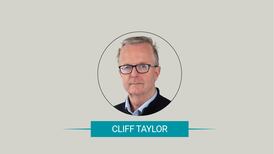Icelanders love pointing to their links with Ireland. Within minutes of arriving in Reykjavik at the government’s invitation to hear its point of view on a long-running mackerel dispute with the EU, foreign ministry press officer Urdur Gunnarsdóttir proudly told me that the DNA of Icelandic women is “75 per cent Celtic”. The men are more Nordic in origin, apparently.
Audunn Atlason, the tall and youthful senior European policy adviser at the ministry, certainly looks like a Viking. Referring to the host of issues remaining to be resolved in Iceland’s application for EU membership, he mentioned the trade in live cattle as a negative point, saying: “We haven’t had a foreign cow here for a thousand years!” Or, indeed, a foreign bull.
Larger than Ireland, but with a minuscule population of 320,000, Iceland values its independence. But for the harsh lesson its people learned in 2008 when the banking system collapsed, it probably wouldn’t have applied to join the EU. And now that the economy has registered its seventh successive quarter of growth, support for EU membership is waning.
Household debt, which threatened to bankrupt many Icelanders after the crash, is also down. Anyone who owes more than 110 per cent of the now deflated value of a home bought during the property bubble is entitled to have the rest written off. The government has also pledged that foreigners who invested in Icesave and other bank offers will get their money back.
Icelanders are getting on with it. As Atlason said, “We’re a small country trying to do its best” – exemplified by the family-owned Stakkavik fishing company in Grindavik, on the south coast, where cod is expertly filleted and put in boxes to be air-freighted to Britain, Belgium and the US. Some of it might even be eaten by Eurocrats in Brussels the same evening.
The Icelandic fishing industry has become increasingly sophisticated. At the Visir fishing company’s offices in Grindavik, we were told that its processing plant knows what the fishing boats are catching on any given day, via a computer link, and anyone can check online the quota for cod, haddock, mackerel or whatever for every Icelandic fishing boat.
Although Icelanders don’t eat mackerel, it is valuable for export and gives fishermen something to do in the summer months when they might otherwise be idle; that’s why Iceland is insisting on its right to catch this oily fish in its own waters. But the government is conscious of the dangers of over-fishing and has reduced its quota for 2013 as a goodwill gesture.
Tourism is also important. The ash-cloud from Eyjafjallajökull that paralysed European air traffic in 2010 raised Iceland’s international profile and, following a substantial devaluation of the krona, it is now much more affordable. So visitors from as far away as Asia can wallow in the aquamarine waters of the Blue Lagoon, heated by hot springs, even in mid-winter.
The landscape of snow-capped peaks and lava fields is unique in Europe. It’s not ideal for farming, but we did see sheep nibbling on what little grass was left on a patch of ground in Grindavik. No wonder Iceland would insist on topping up the EU single farm payment in recognition of the harsh conditions of Arctic agriculture – just like Finland and Sweden do.
Though 66 degrees north, at the edge of the Arctic Circle, the climate is not as cold as you’d imagine – thanks to the Gulf Stream; it was 4 degrees and sunny on the day we left. And by complete coincidence, news came through that the Harpa concert hall and conference centre in Reykjavik had been shortlisted for the EU’s Mies van der Rohe architecture prize.
Designed by Copenhagen-based Henning Larsen Architects in collaboration with Icelandic-Danish artist Olafur Eliasson, it was to be the centrepiece of a much larger scheme at a pivotal point on the waterfront. But Landsbanki, Iceland’s biggest bank, which was funding it, went wallop in 2008, so the government and city council moved in to finish the concert hall.
Like a large block of ice, its dazzling facade is made from hexagonal glass tubes that glint in the sun during the day and, at night, are lit by low-energy lights in an array of colours that dance in the dark.
It would be quite a coup for Iceland – still outside the EU and likely to remain so – to win Europe’s premier architecture award. Let’s hope they pull it off.









